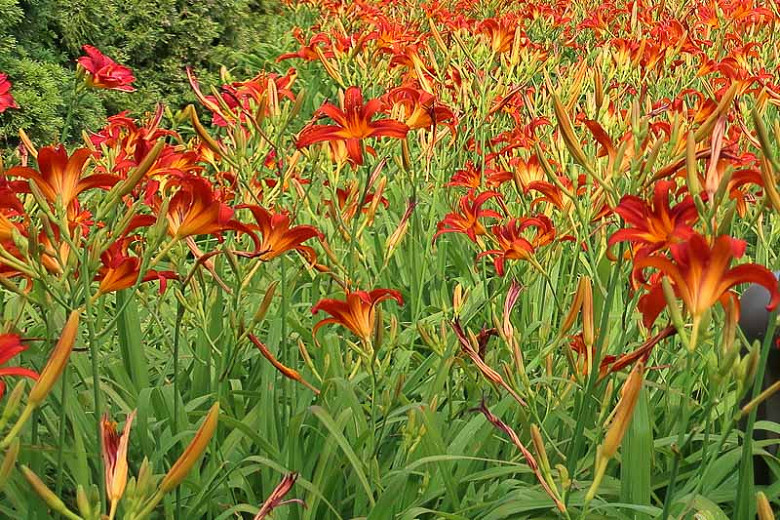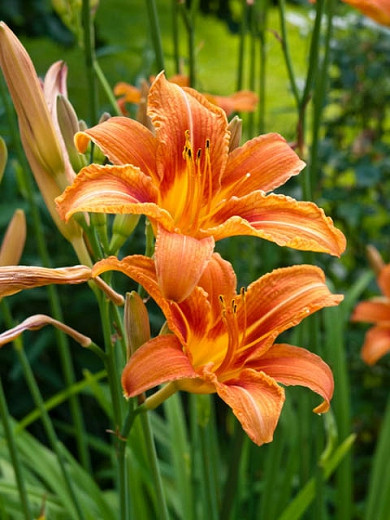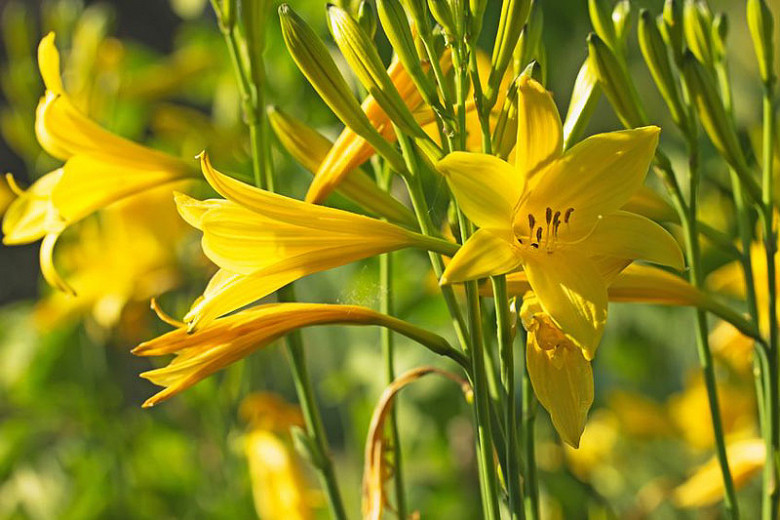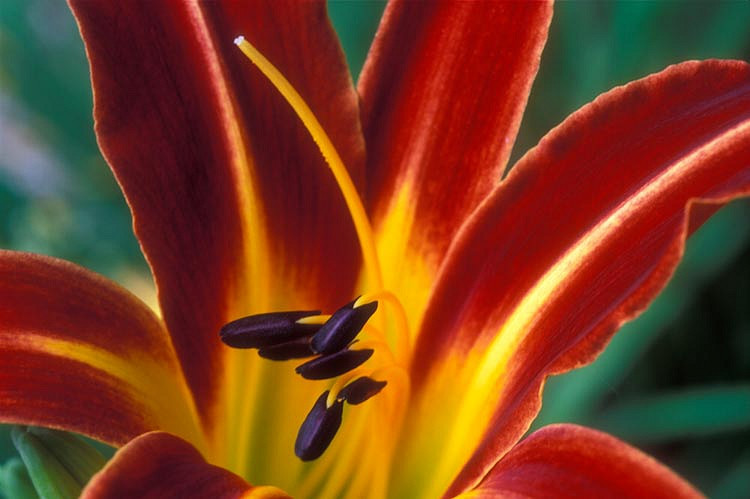Hemerocallis Nashville Star (Daylily)
Hemerocallis ‘Nashville Star’ (Daylily) is a compact, semi-evergreen perennial boasting a profusion of rich burnt red flowers, 4 in. across (10 cm), adorned with a golden orange throat. Blooming from early to mid-summer, the attractive blossoms are held neatly above its compact mound of arching, sword-like leaves.
Hemerocallis 'Nashville Star' (Daylily) is a compact, semi-evergreen perennial boasting a profusion of rich burnt red flowers, 4 in. across (10 cm), adorned with a golden orange throat. Blooming from early to mid-summer, the attractive blossoms are held neatly above its compact mound of arching, sword-like leaves. Each flower typically lasts no more than 24 hours (thus the common name 'Daylily'). This midseason diploid daylily is excellent for mass plantings, erosion control, and perennial borders.
- Grows up to 24-30 in. tall (60-75 cm) and 12-18 in. wide (30-45 cm).
- Thrives in full sun to part sun in average, moist, but well-drained soils. While it performs well in a wide range of soils, fertile loam is preferred. Tolerates heat and summer humidity, but thorough watering is required to ensure its foliage remains attractive.
- An ideal choice for beds and borders, cottage gardens, coastal gardens, rock gardens, as a ground cover, or in containers near the patio.
- Often called the 'perfect perennial' because of its numerous qualities: showy flowers, drought tolerance, heat stress immunity, ability to grow in most hardiness zones, and low care requirements, this daylily is a remarkable and stunning addition to the garden.
- Daylilies attract butterflies and hummingbirds but are toxic to cats. Rabbits tend to avoid daylilies.
- No serious pest or disease issues. Keep an eye out for mites, aphids, thrips, or daylily rust.
- The best time to plant Daylilies is in early fall or early spring.
- After flowering, remove spent blooms and seedpods to improve the appearance and encourage rebloom. When all the flowers on a scape are finished, cut off the scape close to ground level. Remove dead foliage from daylilies as they die back in the fall.
Requirements
| Hardiness | 4 – 9 |
|---|---|
| Heat Zones | 2 – 11 |
| Climate Zones | 1, 1A, 1B, 2, 2A, 2B, 3, 3A, 3B, 4, 5, 6, 7, 8, 9, 10, 11, 12, 13, 14, 15, 16, 17, 18, 19, 20, 21, 22, 23, 24, H1, H2 |
| Plant Type | Perennials |
| Plant Family | Hemerocallis – Daylilies |
| Exposure | Full Sun, Partial Sun |
| Season of Interest | Summer (Early,Mid) |
| Height | 2' – 3' (60cm – 90cm) |
| Spread | 1' – 2' (30cm – 60cm) |
| Spacing | 12″ – 18″ (30cm – 45cm) |
| Water Needs | Average |
| Maintenance | Low |
| Soil Type | Chalk, Clay, Loam, Sand |
| Soil pH | Acid, Alkaline, Neutral |
| Soil Drainage | Moist but Well-Drained |
| Characteristics | Showy, Semi-Evergreen |
| Tolerance | Drought, Rabbit |
| Attracts | Butterflies, Hummingbirds |
| Garden Uses | Beds and Borders, Ground Covers, Patio and Containers, Small Gardens |
| Garden Styles | Coastal Garden, Gravel and Rock Garden, Informal and Cottage, Traditional Garden |








